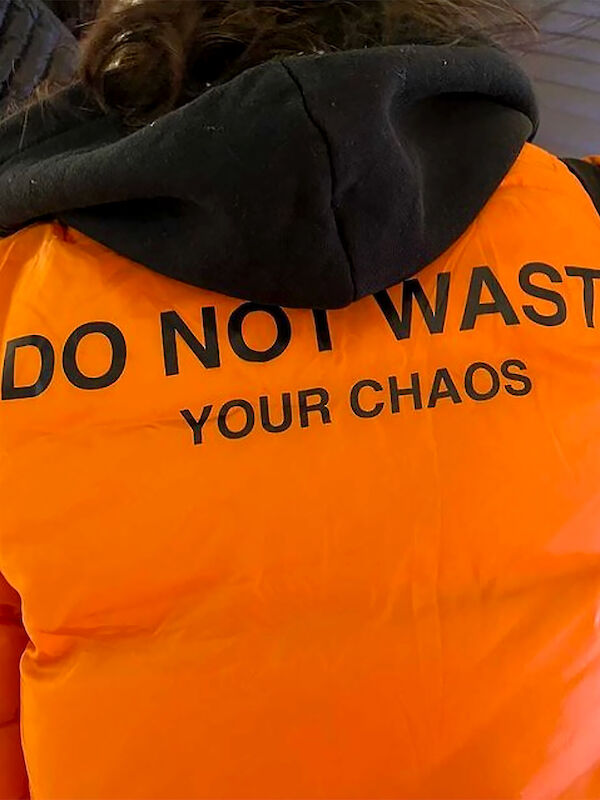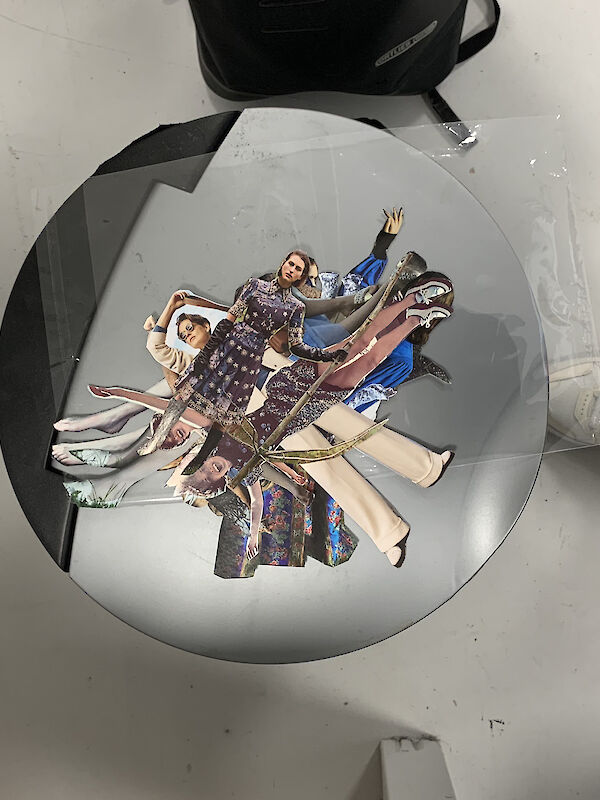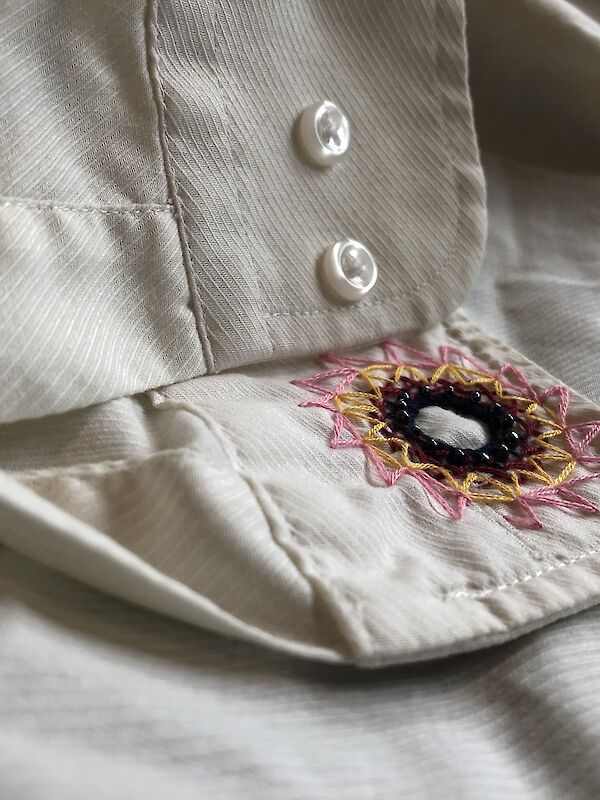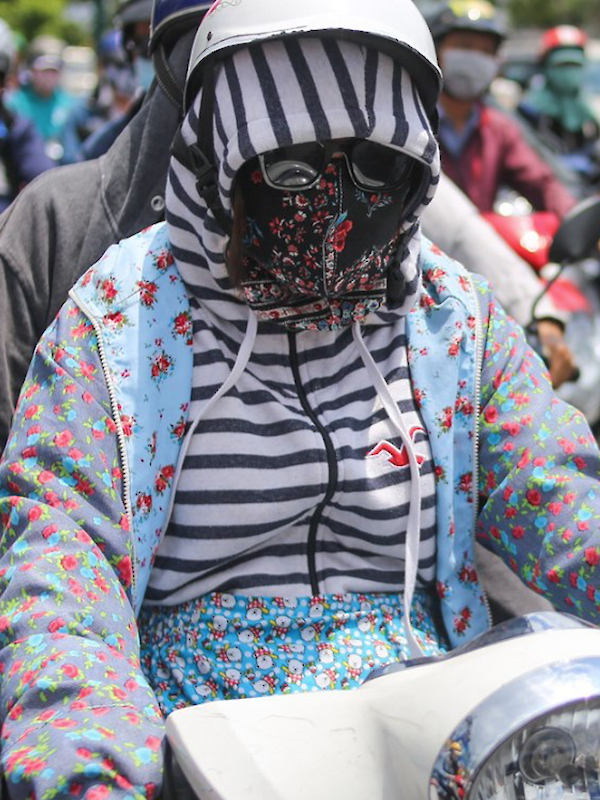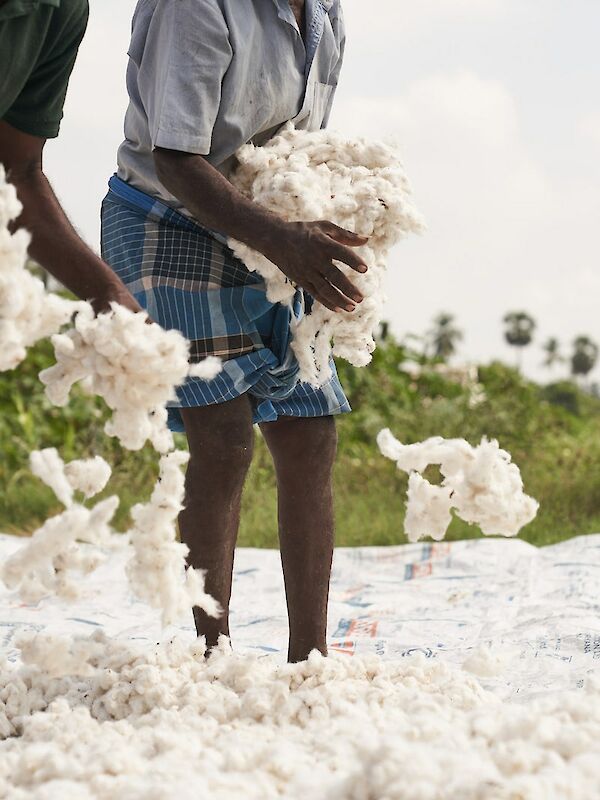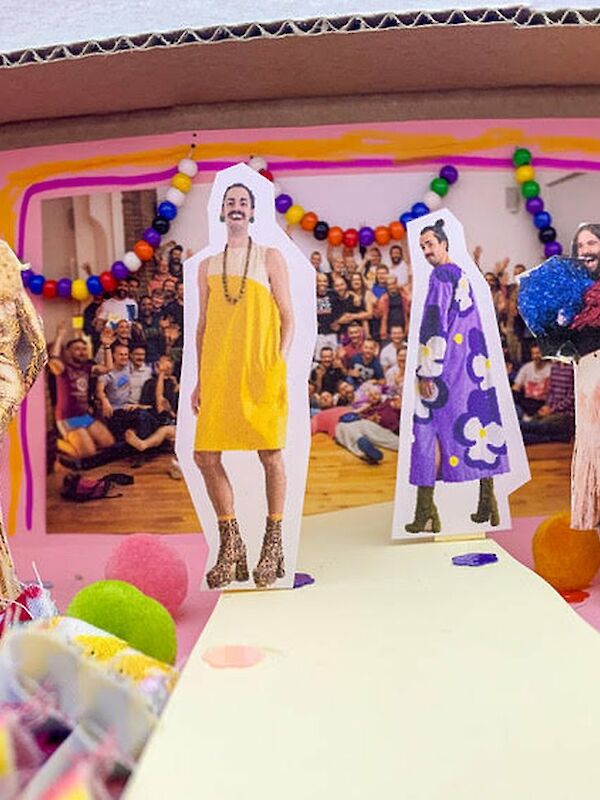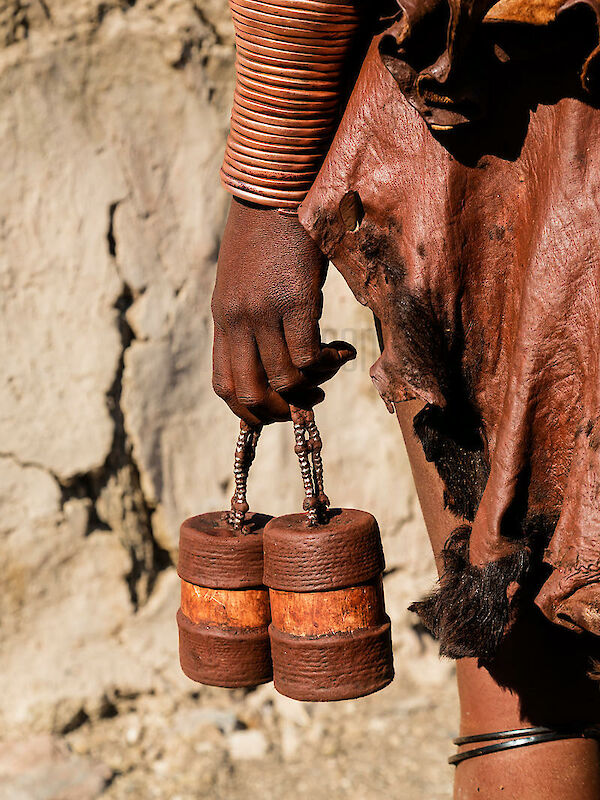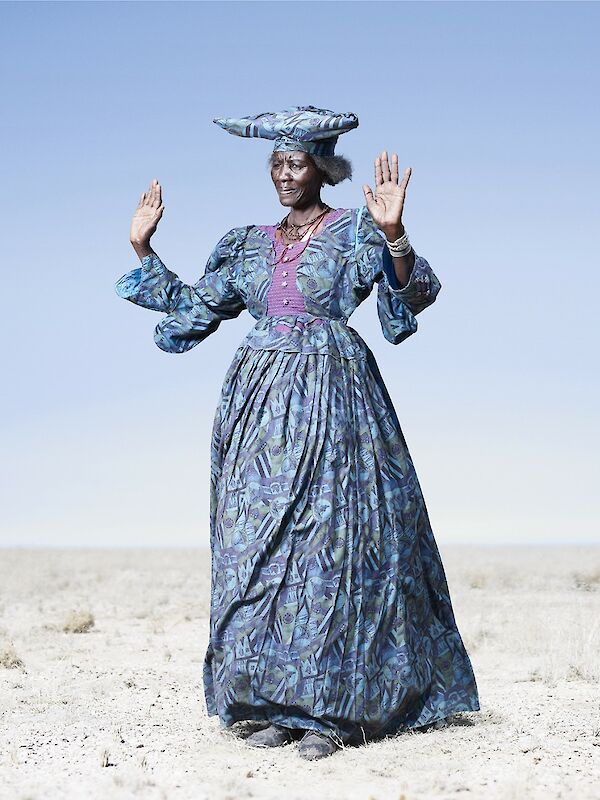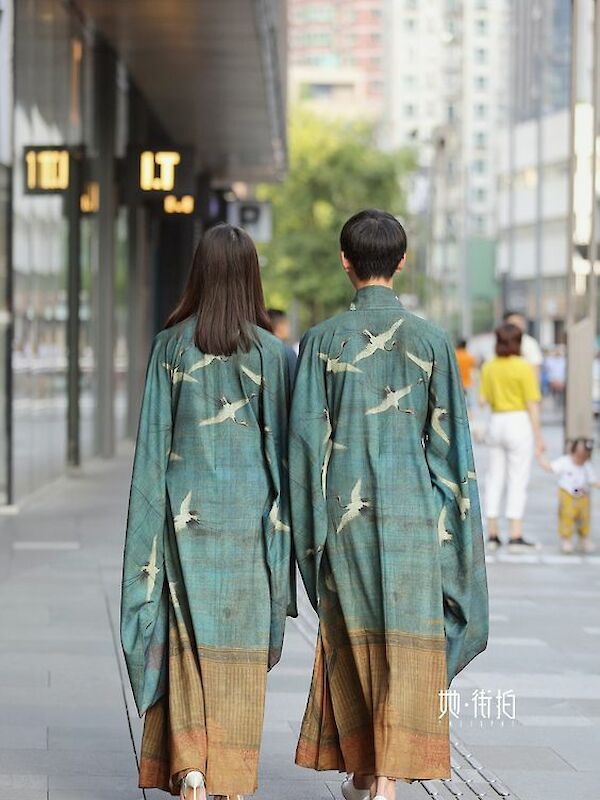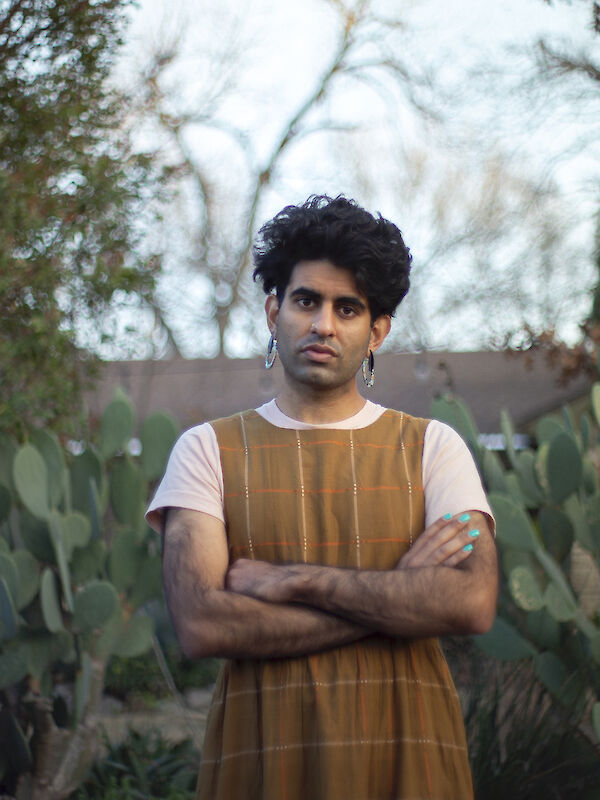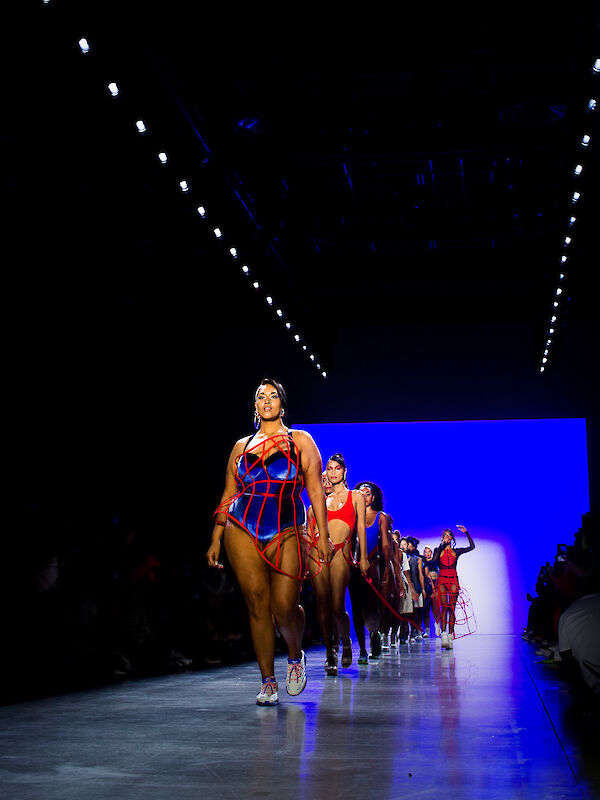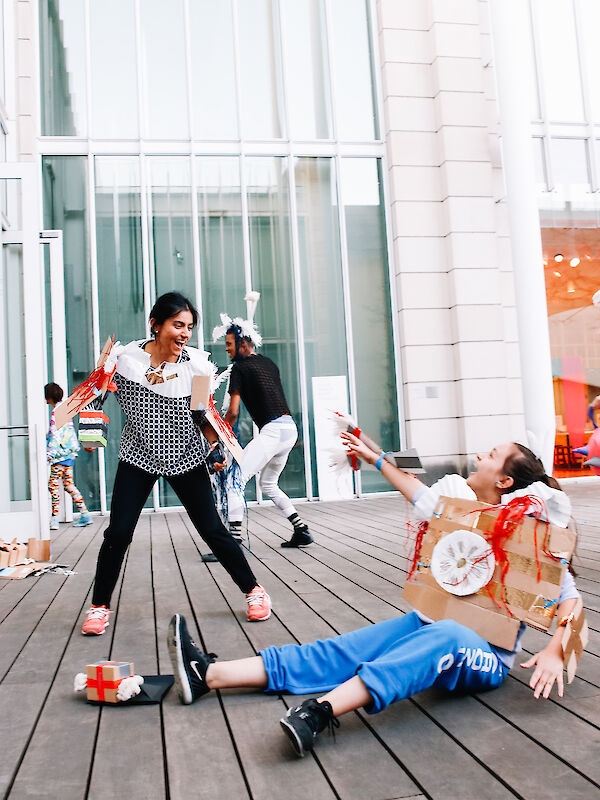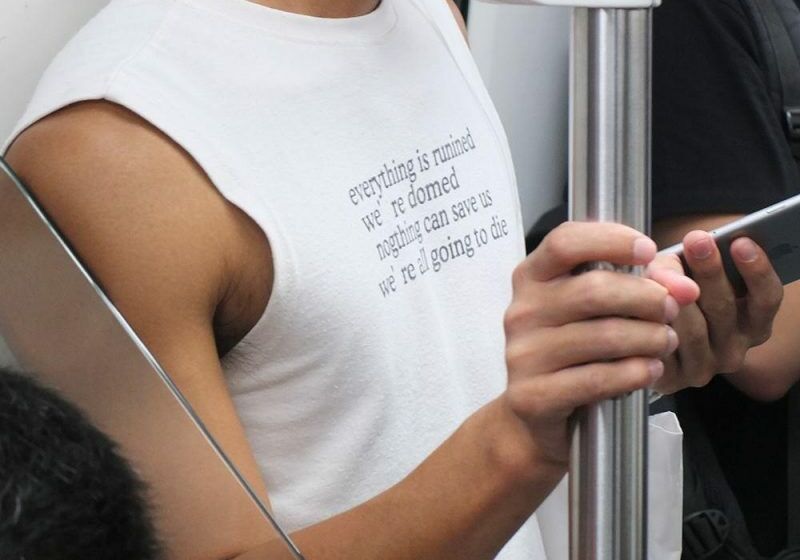
aDREAM INTO AN EMPTy: Some Threads on Doubles and Desires
Shanzai Lyric in residence at Canal Street Research Association
The counterfeit object is perhaps the clearest emblem of the destructive, wasteful speed of fashion production in a hyper-capitalist global economy, built on stoking and never quite sating consumptive want. And yet, the counterfeit object offers an experience of estrangement, costuming itself in the garb of the original, so as to bring attention to the artifice at the heart of the whole endeavor: the slippage between copy and copied, the fakery of ownership itself. This alienation brought on by the poetry of the bootleg functions to sharpen our attention to the violent lies of branding. After all, a brand in its original meaning and usage is a mark made by hot iron to assert possession, or designate disgrace, by burning a symbol into flesh. Shanzhai lyrics bend and break brands, as Balenciaga becomes:
BAENCIALGA
BAIEFMCLACA
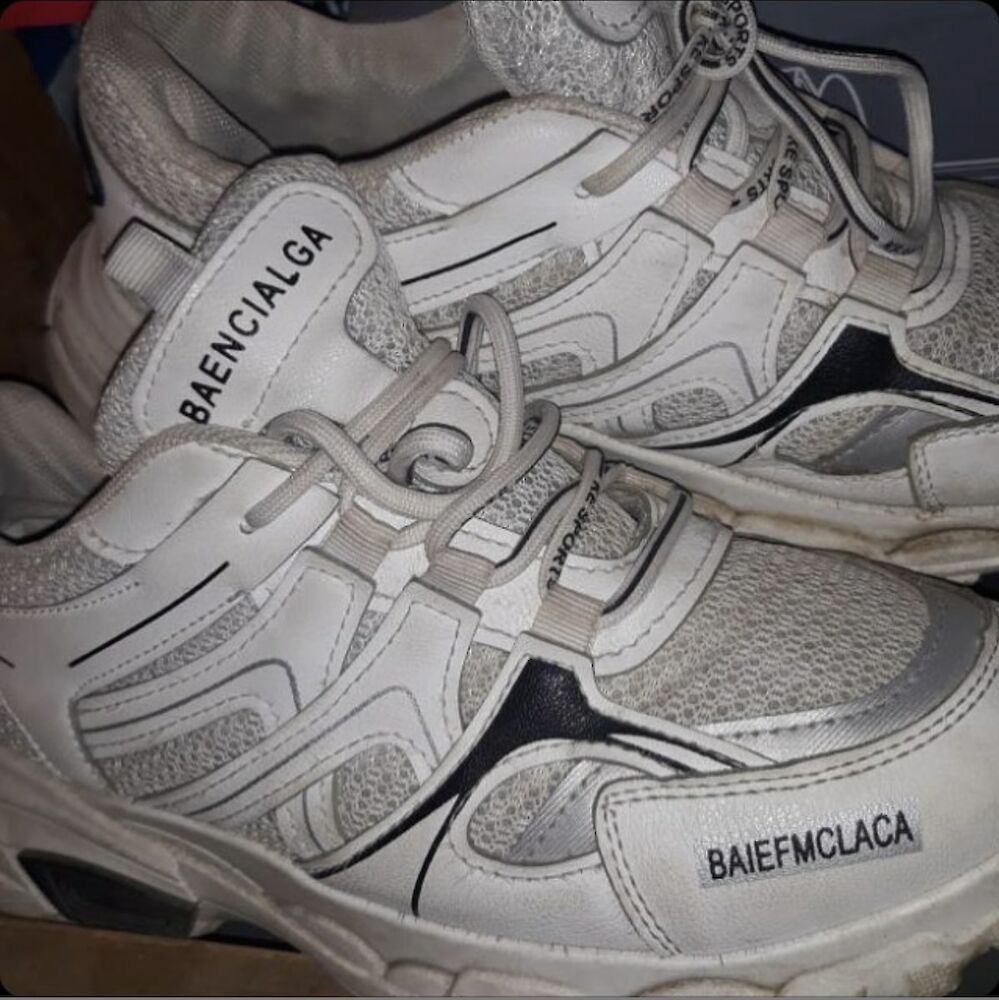
The poetic lines of non-standard English text that curve across these clothing garments, mostly made in China and sold around the world, form a phenomenon we refer to as Shanzhai Lyric. They incorporate pop references, names of cities, song lyrics, excerpts from design manuals, marketing lingo, and logos of all kinds, strung together in thick undulating blocks of text:
DES ERATE
Take the unpredictable trouble
However,
the tunes all stand out
as individual and
the recording
sounds great
Unveil to me all that you want me to do
All this makes this re-release very welcome
In 1965,
Impala set an all-time
industry annual sales
record of more than
1 million units.
Impala.
Thus, this was perfected
in the Impala.
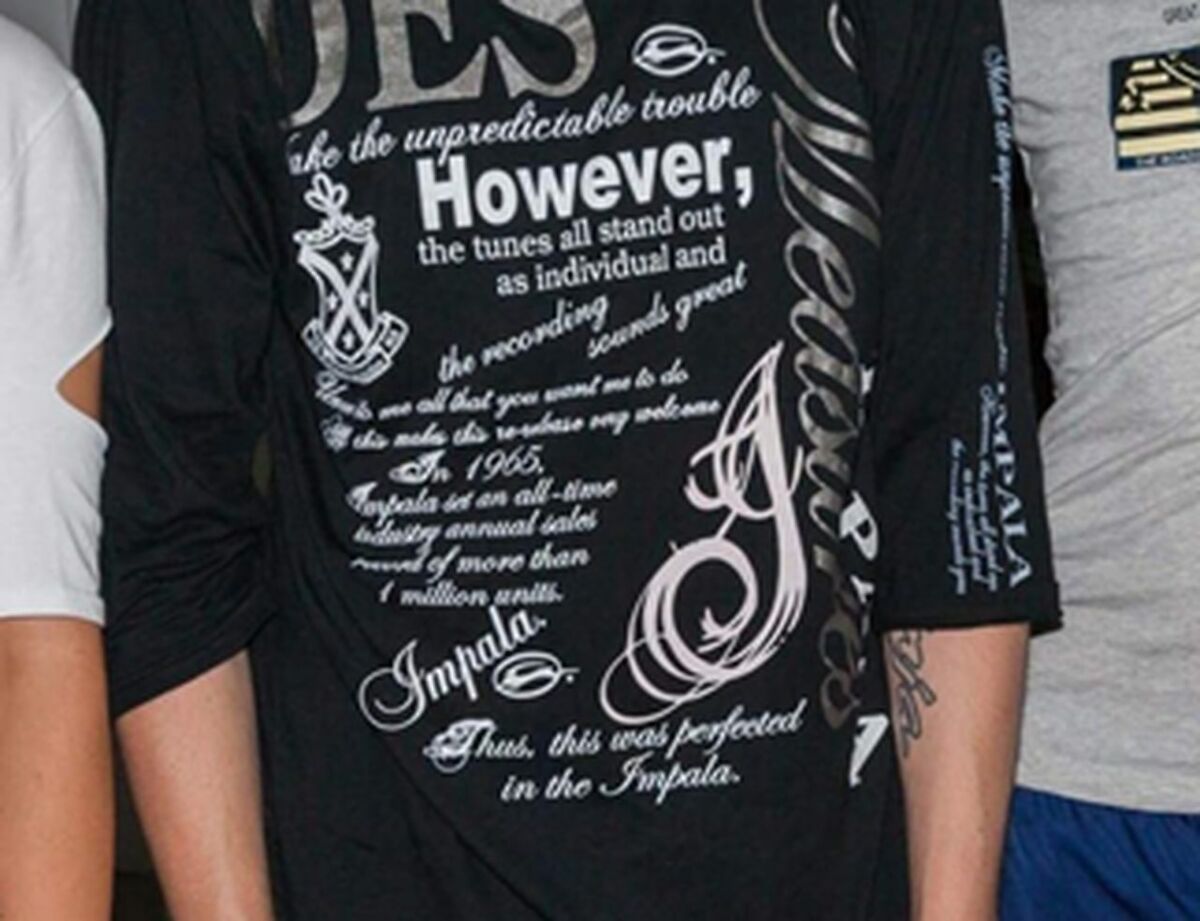
or spliced in all directions like a concrete poem of financial doom:
disaster looming CAPITAL fear aro
SHARES WORTH Crash! slow revival
deepens assets crisis
doubt Interest rates
cession forecast revivsund dollar weakeen
MONETARY PO Bust! slump
Global trends
announces trading loss
disaster looming
fear oses stim u i us package
CAPITAL INVESTMENT anxiety deepens
survival in doubt
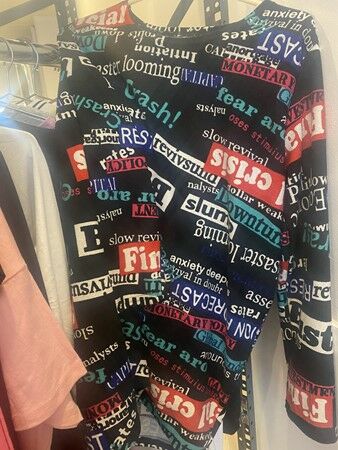
or floating simply centered but slyly off-kilter:
“LOGO HRRE”

Shanzhai (山寨) is the Chinese word for counterfeit—though, literally translating to “mountain” “hamlet” in reference to a tale of an enclave on the edge of town where bandits stockpile stolen goods to redistribute among the people. Thus, shanzhai takes on a spatial capacity as both a sanctuary and a stronghold. The text on shanzhai garments offers refuge from the language of the dominant fashion industry, while being composed of its overstock.
We have been thinking about the implications of shanzhai poetry since we first visited the now-defunct wholesale Zoo Market in Beijing six years ago. During our visit we began transcribing the crowded fragments of text which, born of and onto the fabrics of fast fashion, make fleeting statements. Shanzhai lyrics disappear as trends shift and new turns of phrase replace the old. Our ongoing attempts to archive these innumerable items is of course a ridiculous and doomed undertaking that brings about a disorienting collision of tempos. The slowness and anachronism of the archive is twisted by the warp speed of fashion production, the world wide web, gentrification, and environmental catastrophe in the form of fires, floods, pandemic. These elements are all tangled up with and accelerate one another. Against this backdrop of despair, shanzhai lyrics read as an exercise in enchantment, in “re-enchanting the world” to borrow a phrase from Silvia Federici, that is, in trying to chant a different world into being. A counterfeit laughs in the face of branding and invites us to laugh along. (Mis)spelling as/is a spell.
everything is ruined
we re domed
nothing can save us
we re all going to die
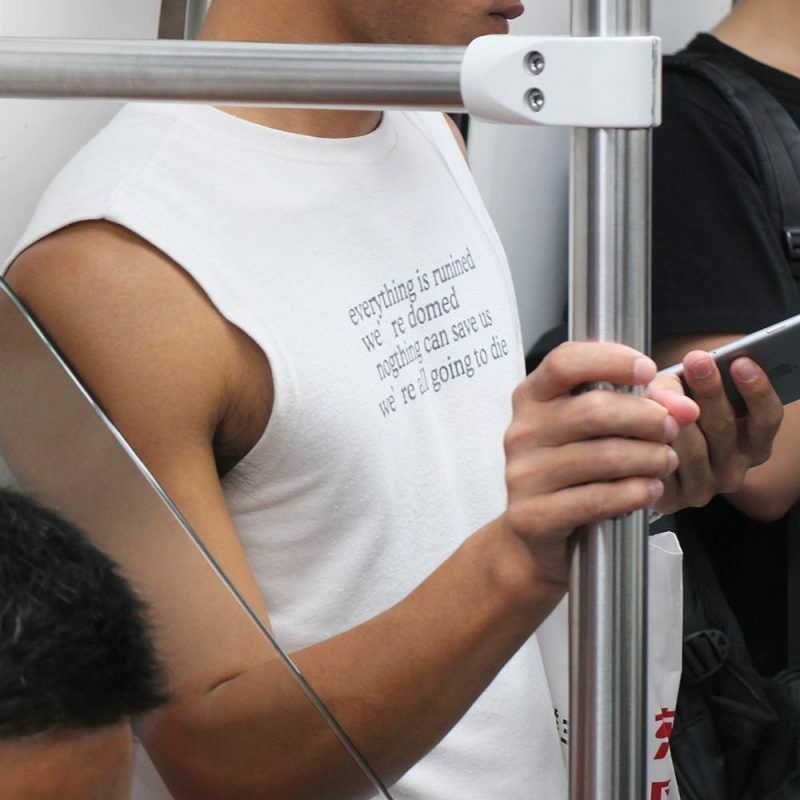
Through the counterfeit, conditions that seem impervious reveal themselves upon closer inspection to be unraveling, and to in fact rely upon this unraveling. The moment when threads start to come apart at the seams is when it begins to feel possible to tug at them and hurry up the end. The infantilization of fashion, whereby “it does not have to assume responsibility for its impact… [and that] permits fashion to disassociate itself from human and natural capital” perpetuates what cultural theorist Mark Fisher calls “capitalist realism”: the all-pervasive ability of capitalism to permeate the grain of reality so that it appears natural and irrefutable. Yet the counterfeit fashion item brings the circumstances of capital to the fore in the form of broken language that alludes to broken conditions. Though all fashion is a form of playing dress-up, shanzhai fashion dresses up at dressing up. In its hyperbole, shanzhai enacts the costume as such, and with it the possibility of cosplaying our way out of this drama of make-believe: capitalist surrealism:
SMILE
UNTIL THE
TEARS
RUN INTO
YOUR MOUTH
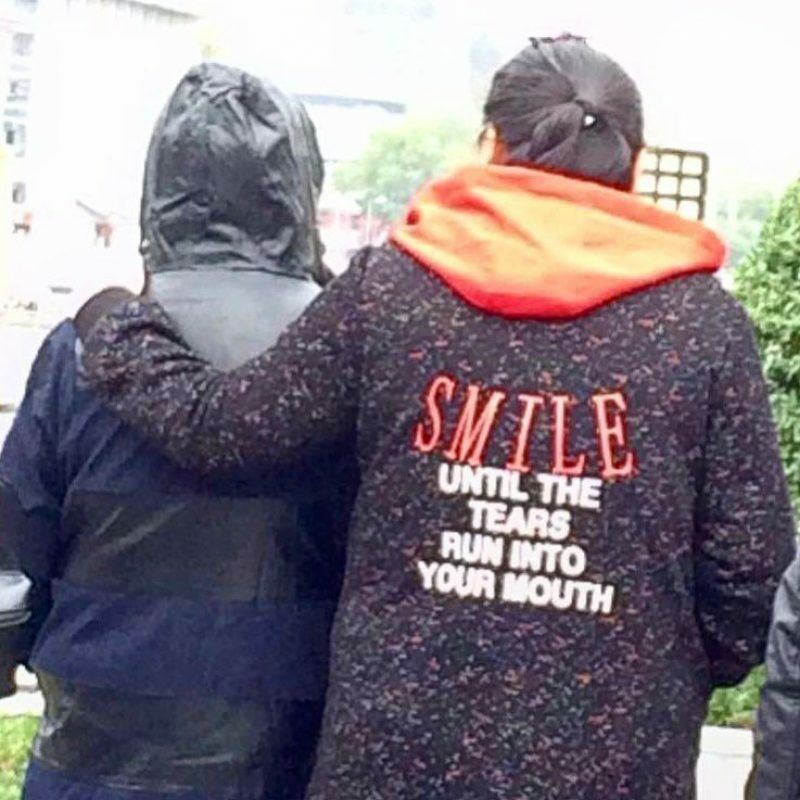
In the absurd onslaught of pandemic, everyone is laugh-crying, some laughing more than others. Jeff Bezos, CEO and president of Amazon, has become the richest man in the world but as Amazon’s whizzing of packages across continents becomes the norm, the Amazon forest burns. Offices and storefronts in Manhattan are empty at double the rate of five years before, while Tesla CEO Elon Musk triples his fortune burrowing tunnels below the street and launching rockets into space. Aspects of the material world appear to atrophy from underuse. It is in this context, where stores have been boarded up by landlords fearful of looting, that we find ourselves occupying an empty storefront on Canal Street, epicenter of the counterfeit market in New York City. A heavily trafficked, stubbornly congested thoroughfare, Canal Street has long been caught inside various development schemes and contestations of theft. The street was originally fashioned as a waterway to funnel industrial waste into the Hudson River. After efforts to beautify what had become a fetid cesspool by lining it with trees conjuring the European promenade, visitors complained of the horrid stench and the canal was filled in. These attempts to cover up the waste, ill health, and overflow generated by capitalist industry continue: today, amidst frequent police raids on street vendors, ongoing schemes to replace souvenir shops and supply stores with galleries and boutiques lay the ground for the arrival of fashion chains. And chains, like brands, allude at the level of the word to the enslavement and exploitation that makes a capitalist economy appear to flourish. As before, the lingering stench of the situation comes from the deception of trying to hide the toxic results of environmental and human degradation: by dumping sludge into the river and planting trees around the canal—or by arresting a precarious workforce to keep out of sight from tourists strolling down Canal.
IT BELONGS WAPSET OF LIVE
SESR SPORTS & CASUAL
YILIAN IN NEW YORK
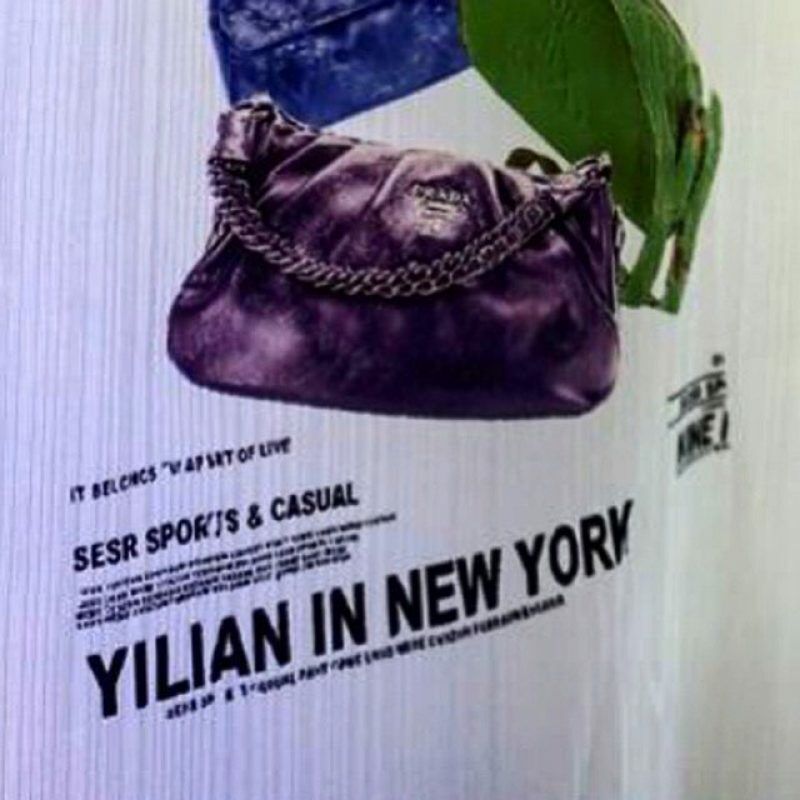
Just as in shanzhai production, the manufacturing of authenticity also plays a crucial role in the saga of New York’s gentrification. Alongside this unfaithful doubling is the imperative to expel the very thing whose hollow copy has been so painstakingly courted and cloned. In the process of gentrification, artists act as authenticators of a cultured history while neutralizing any possible antagonisms that might arise. As easily drawn in as they are spit out, artists are sought after bedfellows for the savvy developer. Fingers grasping for a place to make their mark offer the Midas touch, as mark so easily becomes market. The history of Canal Street is thus the history of artists moving in and then getting evicted. History is itself a kind of property dispute: who gets ownership of the narrative, who gets to tell the official story:
STORY IT ALL ME
DO YOU WANT TO KNOW?
X X
79
X X
EDN
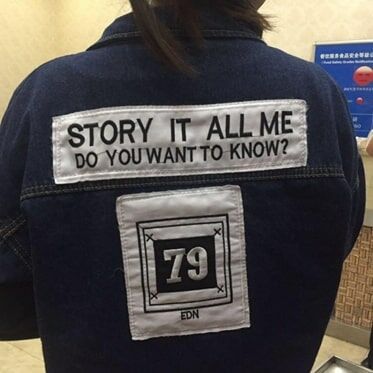
The Canal Street vendors of counterfeit bags, scarves, shoes, and hats also have a complex relationship to the official story. They talk with a cheeky pride of how their business is in fact a form of advertising for the luxury fashion brands they bootleg: the grey economy demonstrates the desire that corporations rely upon to assert their own value. Against a backdrop of boarded up shops, the lively street market of “Little Senegal,” as is called the stretch of the block whose street vendors hail mostly from West Africa, draw in crowds of tourists on which the city thrives. Juxtaposing “fake” goods on the sidewalks of Canal Street alongside their “real” editions behind glass windows of luxury stores on Broadway just up the block facilitates the consumer’s false sense of agency: their ability to choose between right and wrong, good and bad, real and fake.
Simultaneously, the street markets expose the economy’s seam, as fragile as that which holds a bag together. Immigrant street vendors are at risk of arrest and deportation because they are operating without proper vending licenses and working papers, and because they are selling goods bearing designs that are considered stolen. In resistance, the vendors share camaraderie rather than competition, a new commoning. When someone’s wares are confiscated (stolen) by police, everyone else pools their resources to help their comrade purchase new stock. Community threatens the aims of development, because when people care for one another, it disrupts the fractured functioning of capitalism.
By demonstrating a blatant disregard for capitalistic, nationalistic regulation of property and of borders, counterfeit markets point to the real frauds that uphold enclosure: exploitation and displacement. Landlords court high end fashion pop-ups, pricing out long-term tenants, supply stores, artists, and streetside knock-offs. Yet during the months of the lockdown, the narrative of progress was paused, the myth of endless growth halted. In June of 2020, the streets of NY flooded with protestors marching in shared grief and rage against police brutality and anti-black violence. Luxury stores were raided as crowds demonstrated their disregard for the laws of private property that undergird a racist state in which the function of the police is to protect the spoils of the rich. In contrast to the widely touted claim that riots and so-called looting harm radical movement building, writer and activist Vicky Osterweil writes in her book In Defense of Looting that riots can be thought of as feminine, re-reproductive bodies tasked with the re-making of community. In the months of pandemic that followed the uprisings, brick-and-mortar retail stayed vacant, and the street market of counterfeits re-emerged in the palimpsest left behind. A community against all odds. As businesses shuttered in fear of property damage, plywood boards covered the storefronts, unfurling a blank canvas for nonofficial narratives of collective ownership to be inscribed anew:
aDREAM INTO AN EMPTy
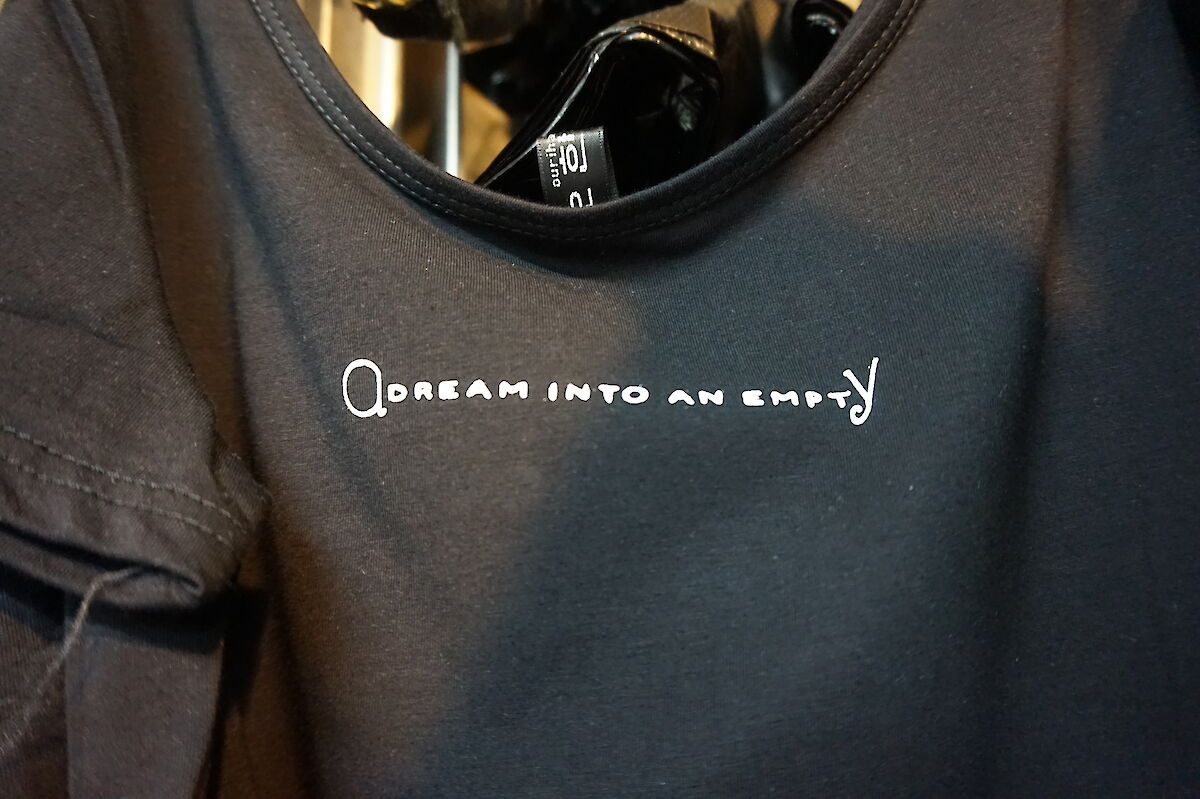
Online Publication: 8 February 2021
References
Canal Street Research Association
Federici, S. (2019). Re-enchanting the world: Feminism and the politics of the commons. Oakland, CA: PM Press.
Fisher, M. (2014). Ghosts of My Life: Writings on Depression, Hauntology and Lost Futures. London: Zero Books.
Han, B. (2017). Shanzhai: Deconstruction in Chinese (Untimely Meditations) (Bilingual ed.). Cambridge: The MIT Press.
Hua, Y. (2012). China in Ten Words. New York: Anchor Books.
Osterweil, V. (2020) In Defense of Looting: A Riotous History of Uncivil Action. New York: Verso.
Rosler, M. (2013). Culture Class. Berlin: Sternberg Press.
Image credits in order of appearance:
1. BAENCIALGA BAEIFMCLACA, 2020. Photo by @wildkiriya, courtesy Shanzhai Lyric
2. Des Erate, courtesy Shanzhai Lyric
3. Poem of financial doom, courtesy Shanzhai Lyric
4.“LOGO HRRE”, courtesy Shanzhai Lyric
5. Everything is runimed we’re domed nogthing can save us we’re all going to die, 2019. Photo by @hosisters, courtesy Shanzhai Lyric
6. SMILE UNTIL THE TEARS RUN INTO YOUR MOUTH, 2017. Photo by @gourdtimes, courtesy Shanzhai Lyric
7. IT BELONGS ÔÇ£WAPSRT OF LIVEÔÇØ SESR SPORTS & CASUAL YILIAN IN NEW YORK, 2015. Photo courtesy Shanzhai Lyric
8. STORY IT ALL ME, courtesy Shanzhai Lyric
9. aDREAM INTO AN EMPTy, Zoo Market, 2015. Photo by Shanzhai Lyric

